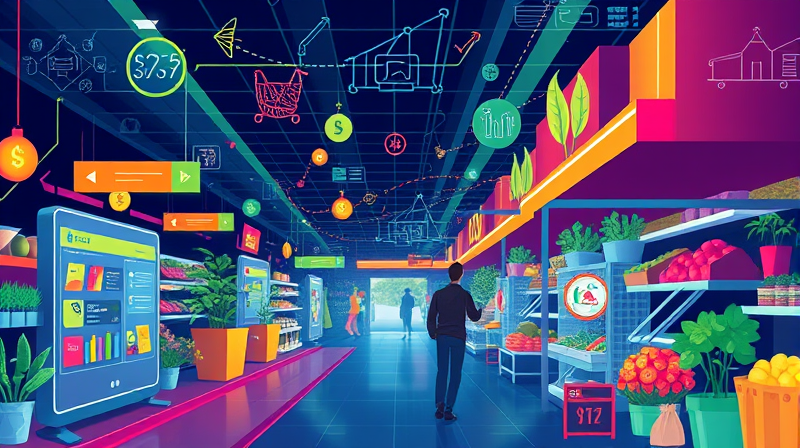Sustainable shopping in 2025 is more than a fleeting trend. It has evolved into a powerful movement that reshapes the way consumers and companies interact with the environment. As the market grows, eco-smart purchases are proving to be a win-win strategy for both protecting the planet and saving money.
Across the globe, the demand for environmentally friendly products is rising rapidly. Recent studies have shown that nearly half of Americans have bought eco-friendly products within the past month even as many consumers continue to face obstacles such as higher prices, limited availability, or a lack of transparent information. This gap in the market represents a tremendous opportunity for brands to streamline accessible, credible eco-friendly options that resonate with a values-driven audience.
Understanding the Eco-Smart Shopper
In today’s world, the profiles of eco-smart shoppers are as diverse as the products they buy. Consumers are not only driven by a desire to protect the environment, but also by smart financial decisions. Researchers have segmented these consumers into several distinct groups:
- Active Greens: These are the environmentally conscious buyers who place sustainability at the forefront of their purchasing decisions. They seek products with recyclable or compostable packaging and feel empowered by the act of making responsible choices.
- Convenient Greens: Although these consumers care about sustainability, convenience and cost often dictate their purchasing habits. They value simplicity in finding eco-friendly products and appreciate clear, direct information about the sustainability of a product.
- Dormant Greens: This group is less influenced by environmental factors when making a purchase, showing that not every consumer prioritizes sustainability equally.
Brands that focus on making sustainable options readily available and affordable are likely to resonate with both Active and Convenient Greens, ultimately fostering long-term loyalty and a broader customer base.
Eco-smart shoppers are proving that investing in the environment can also mean investing wisely by saving money. The synergy between sustainability and smart fiscal choices is becoming more evident in various sectors, including appliances and packaging.
The Impact of Minimalist Packaging
A significant facet of eco-smart purchasing is the emergence of minimalist packaging solutions. In 2025, many companies are opting for eCommerce-ready packaging designs that use fewer resources. These lightweight and durable options cut down on material waste, reduce shipping costs, and minimize the overall environmental footprint.
This shift in packaging strategy not only benefits the environment but also leads to lower prices for the consumer. By eliminating unnecessary inks, coatings, and excessive materials, companies are able to pass along cost savings to their customers. This approach aligns perfectly with the ethos of reduced waste and a focus on efficiency, offering both economic and environmental advantages.
Smart Financial Benefits of Greener Choices
Many consumers are discovering that choosing sustainable products does not necessarily mean higher costs. In fact, eco-smart choices often prove to be more budget-friendly over time. Here are some practical ways in which eco-friendly products can save money:
- Reduced Waste, Reduced Cost: Products that are reusable or refillable can lead to significant long-term savings compared to single-use alternatives, effectively reducing household waste.
- Energy- and Water-Saving Devices: Appliances that carry ENERGY STAR ratings or boast water efficiency are designed to cut down on monthly utility bills, resulting in lower overall expenses.
- Buying for Longevity: Sustainable products are typically built to last. This durability minimizes the need for frequent replacements, ensuring that every purchase is a long-term investment.
- Digital-First and Local Shopping Options: The convenience of online shopping allows consumers to explore and compare a wide range of sustainable products with competitive pricing. Additionally, buying locally produced sustainable goods can cut down on transportation costs, furthering the savings.
Consumers who focus on time-tested quality and durable design discover that investing in products with longer life spans often results in less frequent spending and more financial freedom in the long run.
A Greener Path for the Future is not just a lofty ideal. It is a pragmatic approach that combines eco-friendly practices with savvy spending. With an increasing number of people willing to adjust their purchasing habits in favor of greener options, every eco-smart decision contributes to a broader movement towards a sustainable economy.
As more brands begin focusing on transparency and affordability in their eco-friendly options, the barrier to sustainable living continues to diminish. Today's consumers have the power to drive market trends by supporting companies that prioritize sustainability. This feedback loop ultimately benefits everyone—resulting in a healthier planet and a robust economy characterized by sustainable growth.
In conclusion, embracing eco-smart purchases means recognizing that sustainability and smart fiscal decisions go hand in hand. Whether it’s through reduced packaging waste, energy-efficient appliances, or durable, long-lasting products, making greener choices offers practical benefits that extend beyond environmental conservation. Every sustainable decision is a step toward a brighter, more resourceful future where the environment and economy flourish together.








